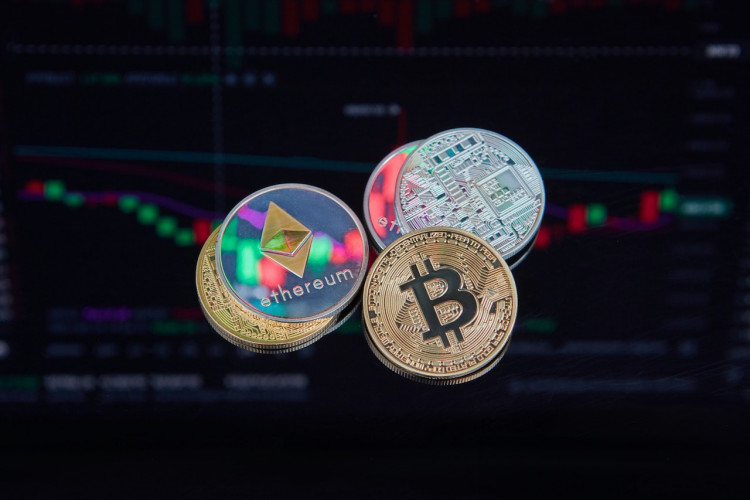The cryptocurrency market experienced a volatile rebound on Tuesday, with Bitcoin and Ether partially recovering from one of the sector's worst sell-offs in recent years. This recovery comes amid widespread fears of a looming U.S. recession, which had earlier triggered a significant market downturn.
Bitcoin prices surged approximately 8%, trading above $55,000 early Tuesday morning, following a steep decline to its lowest point in six months. Despite this rebound, Bitcoin remains nearly 17% down from its value a week ago. Similarly, Ether, the world's second-largest cryptocurrency by market value, gained around 9%, trading above $2,450, although it has still lost about 25% of its value over the past week.
Other major cryptocurrencies also saw gains. Binance's BNB, Solana's sol, Ripple's XRP, dogecoin, and Cardano's ada all rose by at least 8%, partially offsetting their significant losses from the previous day. The total value of the cryptocurrency market increased by nearly 8% in the last 24 hours, reaching $2.07 trillion. This recovery comes after the market shrank by more than 16%, shedding over $400 billion in value in the past week.
The recent crash was one of the most severe since the launch of spot-bitcoin and spot-ether exchange-traded funds in the U.S. earlier this year. Ether, in particular, notched its worst day since 2021, with Bitcoin and other assets like dogecoin also sinking to six-month lows. The downturn raised concerns that the broad upward trajectory seen since late 2022 could be at risk.
The market turbulence has been exacerbated by grim U.S. jobs data, intensifying fears of an impending recession. These economic worries have not only affected cryptocurrency markets but also global stock indices. Major U.S. stock indices like the S&P 500, Nasdaq Composite, and Dow Jones Industrial Average closed with their lowest prices in months, collectively losing $3.5 trillion in market capitalization.
Adding to the market's complexity, geopolitical tensions, such as those between Iran and Israel, and the U.S. Federal Reserve's decision to maintain high interest rates, have tightened global liquidity. Bitcoin's resilience amidst these economic pressures suggests that investor confidence in its long-term potential remains strong, despite the volatility.
The trading volume of Bitcoin exchange-traded funds (ETFs) surged significantly amid the market volatility, surpassing $1 billion on August 5. According to Alex Thorn of Galaxy Digital, Bitcoin ETFs saw over $1.3 billion in trading volume within just 20 minutes, with the iShares Bitcoin Trust leading at $875 million. This surge was driven by investors seeking opportunities after Bitcoin prices dropped by approximately 8%.
Despite the increased trading activity, analysts anticipate a slowdown in new crypto investments until the market stabilizes, as high volatility continues to deter major players. Bitcoin's mining difficulty has reached a record high of 90.67 trillion hashes, indicating that it now requires significantly more computing power to mine Bitcoin, further adding to the market's complexity.
The recent halving event, which reduced the reward for mining a Bitcoin block from 6.25 BTC to 3.125 BTC, has also influenced the market. While this halving decreases the rate of new Bitcoin creation, potentially increasing its value over time, it also intensifies pressure on miners, pushing some to repurpose older equipment for other tasks, such as processing artificial intelligence data.
Technically, Bitcoin faces strong resistance around the $56,250 mark. The 4-hour chart indicates that an inability to close above this pivot point could lead to further downside pressure. Immediate support for Bitcoin is found at $52,579, with additional support levels at $49,630 and $46,815. The Relative Strength Index (RSI) and the 50-day Exponential Moving Average (EMA) both suggest a bearish outlook, reinforcing the downward momentum.
Given the current setup, a cautious approach is recommended. Traders should consider selling Bitcoin below the $56,250 resistance level, while buying should only be considered if the price closes above this level, signaling a potential shift in momentum.






